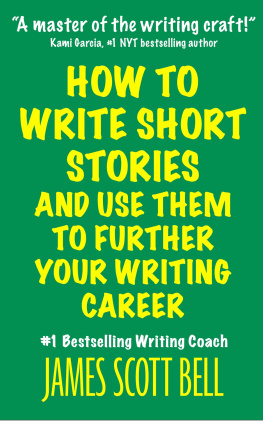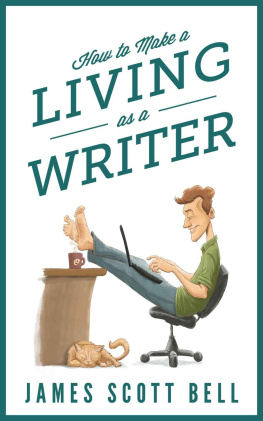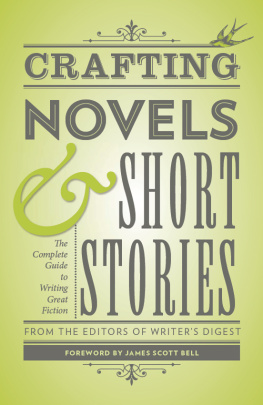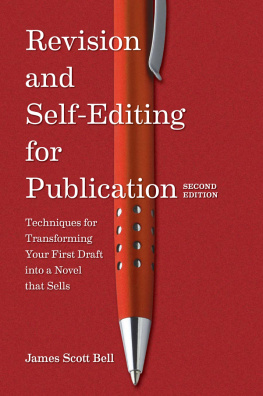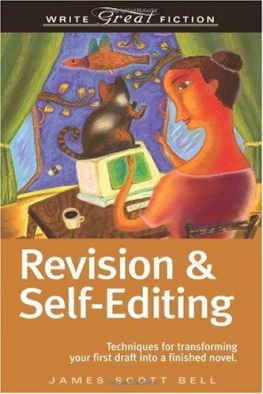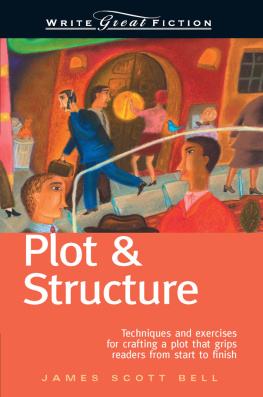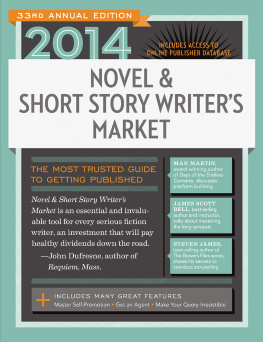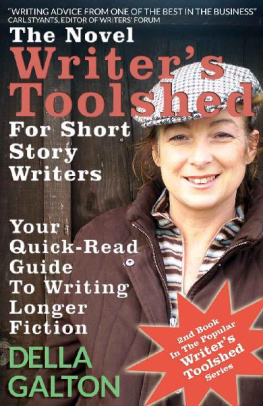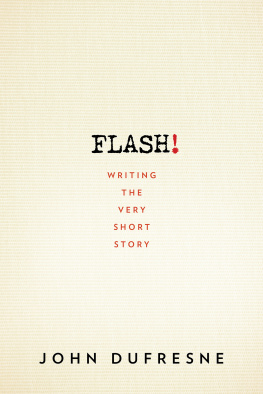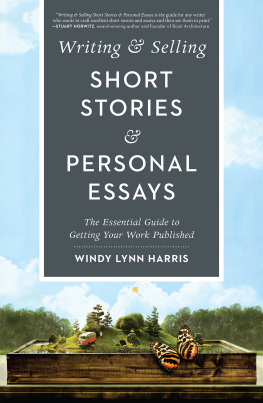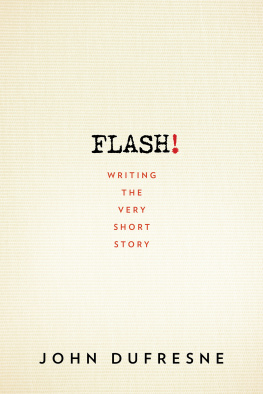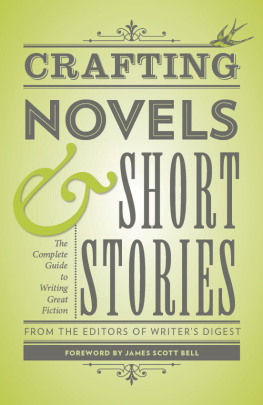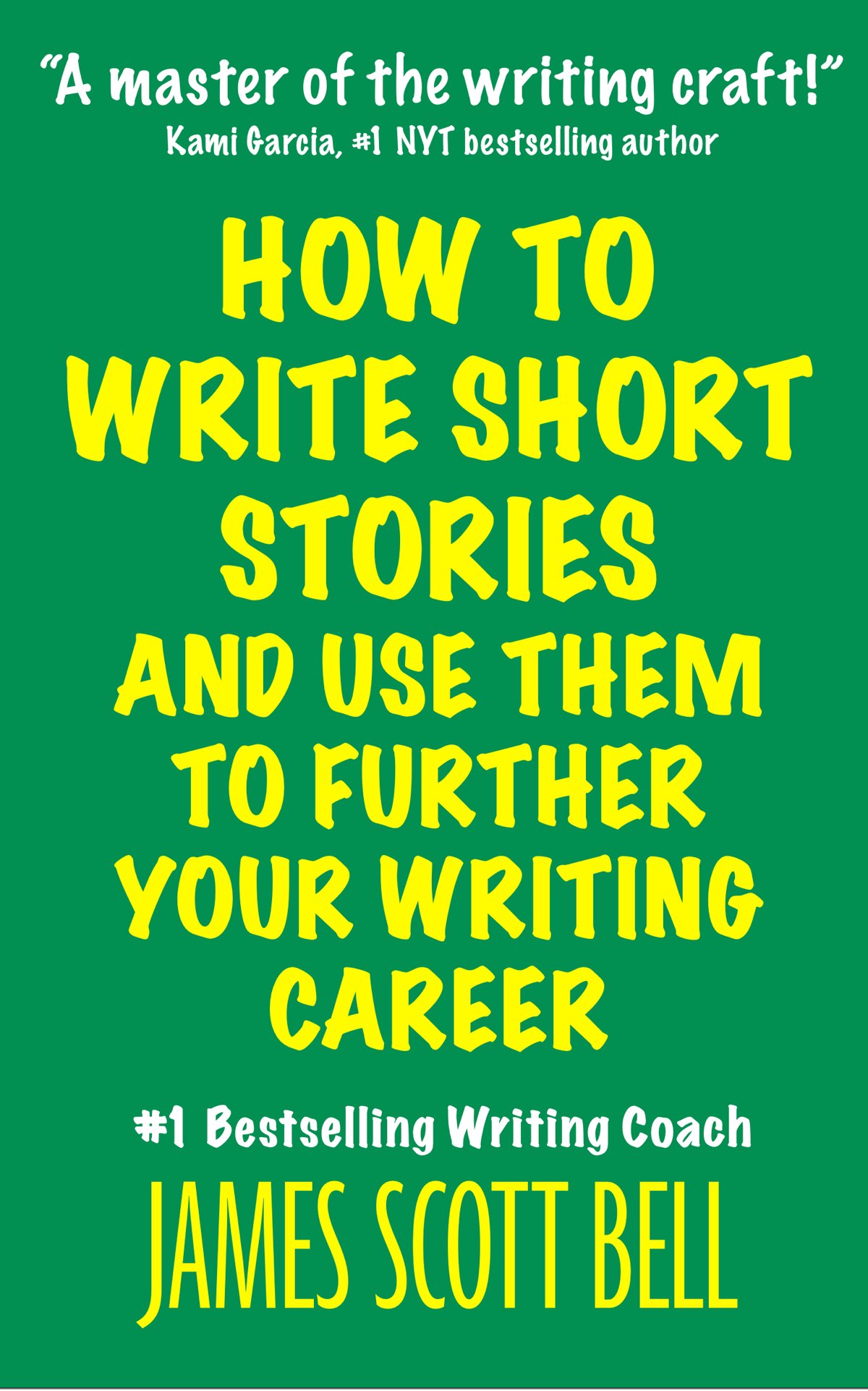
How to Write Short Stories and Use Them to Further Your Writing Career
James Scott Bell
Copyright 2017 by James Scott Bell
All rights reserved.
No part of this book may be reproduced in any form or by any electronic or mechanical means, including information storage and retrieval systems, without written permission from the author, except for the use of brief quotations in a book review.
Contents
What is a Short Story?
Theres an episode of Seinfeld where Jerry goes to pick up a rental car. Hed reserved a certain model. But the agent at the counter says they dont have any of those models available.
Jerry protests, But the reservation keeps the car here. Thats why you have the reservation.
I think I know why we have reservations, says the agent.
I dont think you do, says Jerry. If you did, Id have a car. See, you know how to take the reservation, you just don't know how to hold the reservation. And thats really the most important part of the reservationthe holding.
Then, flailing his arms around, Jerry observes, Anybody can just take em!
Which brings us to the subject of short story writing.
(Cue flailing arms): Anybody can just type a bunch of words. The words can be about characters in a scene or two. The words may have a nice sound, too. And even add up to short-story length.
But thats not the most important part of a story.
The most important part is emotional impact.
On some level, you must move the reader. They are giving you their time, even if its just long enough to read your story. The story has to stir, mangle, delight or somehow engage their emotions.
Which is no easy thing to accomplish.
In this book, Im going to give you a key that will make it easier for you to do it.
This key, by the way, applies to any genre of short story, from literary to pulp; from stories appearing in the most prestigious journals to self-published tales sold on Amazon.
Once you grasp this concept, the writing of a great short story will be much less daunting.
Youll still have to work at it, of course. Great writing is hard work, and short stories are especially challenging.
I want to help you meet that challenge, and then suggest how you can use your short stories to further your writing career.
Short Stories Today
The early 20th century was a fertile time for the short story. At the turn of the century, writers like Jack London and O. Henry were wildly popular. At the same time, the market for pulp magazine content was exploding. Scores of writers whose names are virtually unknown to us today were cranking out short stories by the bushel for an insatiable reading public.
By the time the 1920s rolled around. you had two vast but wildly different markets open to you as a short story writerliterary and pulp.
The literary world was peopled with names like Fitzgerald and Hemingway, soon to be followed by the likes of Thomas Wolfe and William Saroyan. Their stories landed in prestigious magazines of the time like Story and The Smart Set.
Meanwhile, the pulp market (so called because these magazines were printed on cheap, wood-pulp paper, thus keeping the cover price modest) was seeing the rise of writers like Dashiell Hammett and Erle Stanley Gardner, followed by scribes such as Raymond Chandler and Robert E. Howard. Legendary pulp magazines included Black Mask, Dime Detective, Amazing Stories and Weird Tales.
After World War II, the pulp market began to dry up, leaving many prolific writers scrambling to find places to publish. Some writers moved to the slicks. These were the magazines like The Saturday Evening Post and Colliers, printed on glossy paper, and having a large middlebrow subscriber base. (Another kind of slick came along in the 1950s, the brainchild of Mr. Hugh Hefner. Playboy did not rise to popularity because of its, er, reading material. But it did become one of the most important publishers of short fiction from the 1960s on. Alice K. Turner, the longtime fiction editor at Playboy, believed in the craft. She once made this observation: If youre good enough, like Picasso, you can put noses and breasts wherever you like. But first you have to know where they belong.)
By the 2000s, there were fewer venues where you could place a short story. Slick magazines, falling to the disruption of online content, started to fold.
There were still publications like Analog and Alfred Hitchcocks Mystery Magazine for short genre works. And low-circulation journals like The Iowa Review and AGNI, for the literary set.
But the prolific short story writer became sort of like the Swaziland gnua rare breed.
And then along came a little something called the Kindle.
Suddenly, anyone could publish a short story in electronic form. They could even make a few bucks with it. But more important for the working writer, the e-story became a way to build up a readership for longer works.
When, that is, the stories are good.
About Emotional Impact
While there is some disagreement over the official length of a short story, a good rule of thumb is that it is between 1k and 7k words. Less than that and you get into the area of flash fiction. More than that and you move into the territory of the novelette (7k - 20k) or the novella (20k-50k).
The reason for this demarcation is that with increased length comes more complexity of plot and structure, and a greater range for multiple characters.
A short story, on the other hand, does quick work and then ends.
But quickness does not mean less emotional impact. Indeed, a great short story can have a punch every bit as memorable as a novel. Its all about getting the reader to feel.
As the great editor Sol Stein put it in Stein on Writing, the fiction writers primary job is creating an emotional experience for the reader. (emphasis Steins). He compares the fiction writer to the conductor of an orchestra,
his back to the audience, his face invisible, summoning the experience of music for the people he cannot see. The writer as conductor also gets to compose the music and play all of the instruments, a task less formidable than it seems. What it requires is the conscious practice of providing an extraordinary experience for the reader, who should be oblivious to the fact that he is seeing words on paper.
If there is no emotional experience, the work of fiction has failed. You may have a message you want to convey, but you would do well to remember the wise words of film director Frank Capra: If you want to send a message, try Western Union. This from a man who made such message films as Mr. Smith Goes to Washington and Its a Wonderful Life.
Capras great skill, of course, was hiding his message inside a film pulsating with great characters, plot twists, and emotion.
What kind of emotional impact, I must note, is variable.
An entertaining crime story with a twist ending, such as that written by Jeffery Deaver, leaves us with a happy snap, a feeling of being fooled and entertained.
On the other hand, a literary story about lovers growing apart by an Ernest Hemingway or an Irwin Shaw, makes us sad, holding a fictional mirror up to the tragedies of life.
And every other kind of emotion in between.
The choice is yours, but the goal is the same: If you want to write a great short story, you must create emotional impact. The stronger the better.
Next page
